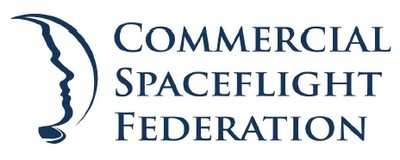Wed, Feb 04, 2015
Says President’s Spending Plan For Next Year Builds On Success Of Commercial Partnerships
The Commercial Spaceflight Federation said in a statement that it applauds the proposals within NASA’s FY 2016 budget request that will enable NASA’s public-private partnerships to advance U.S. exploration in low-Earth orbit and beyond. The budget provides $1.24 billion for the Commercial Crew Program, $231 million for Advanced Exploration Systems (AES), and $15 million for Space Technology’s Flight Opportunities Program.

“Many of the proposals in this budget request continue the good work enacted into law by Congress last year,” stated CSF President Eric Stallmer. “We applaud the strong support for Commercial Crew and Cargo, Advanced Exploration Systems, and Space Technology’s Flight Opportunities Program, all of which contribute to safe, reliable, and cost-effective capabilities for our nation’s space program. We look forward to working with Congress to fully fund and authorize these innovative commercial approaches to achieve our national space priorities.”
NASA’s Commercial Crew and Cargo Programs leverage competitive, firm-fixed price contracts to provide the U.S. with multiple transportation capabilities to and from the International Space Station; thereby ending NASA’s dependence on Russia by 2017. NASA currently pays Russia more than $70 million per seat to fly our Astronauts from Russia to the International Space Station. With two domestic providers under contract, the Commercial Crew Program will allow American Astronauts to fly from American soil and lower the average cost per seat to $58 million.
AES initiatives enable NASA to leverage industry’s investments in the development of exploration capabilities such as expandable habitat modules and lunar landers. These public-private partnerships will play a critical role in extending sustained human presence in and beyond low-Earth orbit.
The Flight Opportunities Program works with commercial companies to pursue cost-effective technology demonstration and science research opportunities on suborbital vehicles. The knowledge gained from these affordable flights will enable future manned and unmanned missions to new destinations, keeping the U.S. at the forefront of exploration technology.
More News
Pilot Applied Full Aft Stick And Nose-Up Trim, But The Airplane Remained On The Runway Analysis: The pilot reported that a preflight inspection and flight control checks revealed n>[...]
A Few Questions AND Answers To Help You Get MORE Out of ANN! 1) I forgot my password. How do I find it? 1) Easy... click here and give us your e-mail address--we'll send it to you >[...]
From 2022 (YouTube Edition): Before They’re All Gone... Humankind has been messing about in airplanes for almost 120-years. In that time, thousands of aircraft representing i>[...]
Advanced Air Mobility (AAM) A transportation system that transports people and property by air between two points in the NAS using aircraft with advanced technologies, including el>[...]
Aero Linx: MQ-1B Predator The MQ-1B Predator is an armed, multi-mission, medium-altitude, long-endurance remotely piloted aircraft that is employed primarily as an intelligence-col>[...]
 NTSB Final Report: Douglas A-4K
NTSB Final Report: Douglas A-4K ANN FAQ: Q&A 101
ANN FAQ: Q&A 101 Classic Aero-TV: PBY Catalina--From Wartime to Double Sunrise to the Long Sunset
Classic Aero-TV: PBY Catalina--From Wartime to Double Sunrise to the Long Sunset ANN's Daily Aero-Term (07.01.25): Advanced Air Mobility (AAM)
ANN's Daily Aero-Term (07.01.25): Advanced Air Mobility (AAM) ANN's Daily Aero-Linx (07.01.25)
ANN's Daily Aero-Linx (07.01.25)



